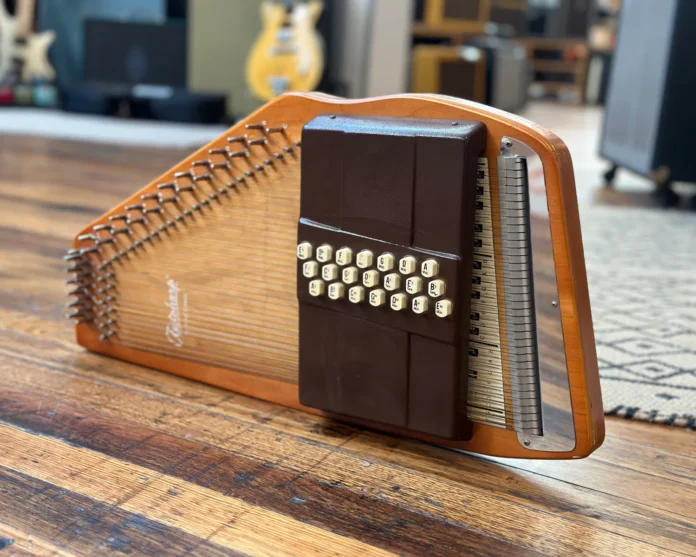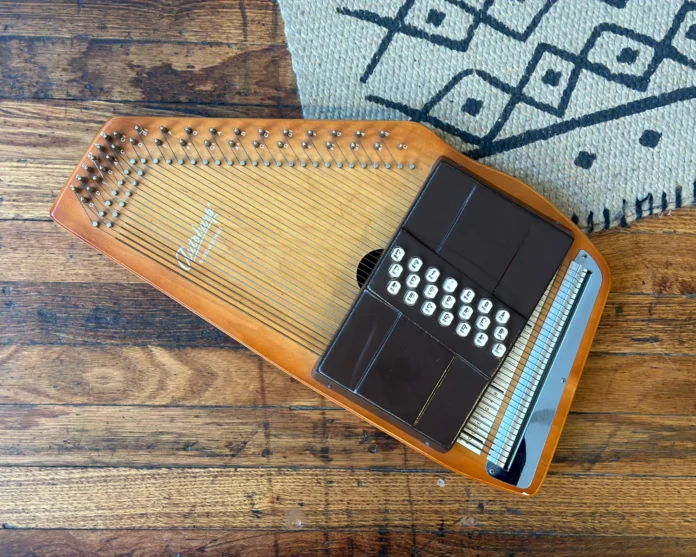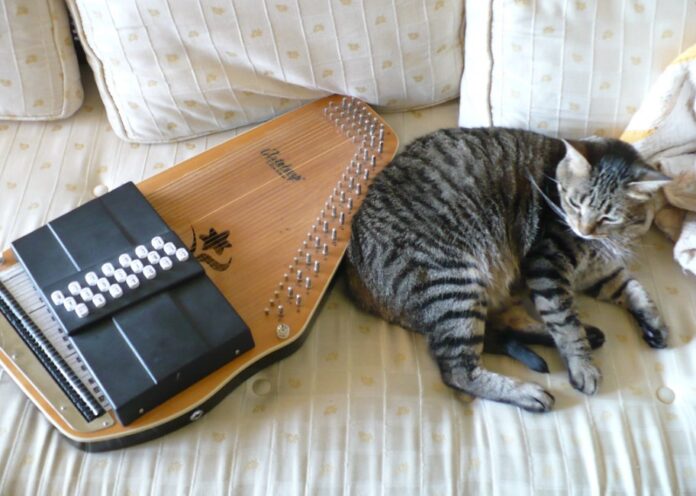The Autoharp is more than just a musical instrument; it’s a source of joy, creativity, and connection for many musicians and families across the United States. As you delve into the world of this versatile and enchanting instrument, you will discover that it has been celebrated for over a century, especially within the realms of folk, country, and bluegrass music.
The Autoharp’s unique design features strings and chord buttons, enabling you to produce melodious sounds with remarkable ease, making it accessible for musicians of all skill levels.
Key Takeaways
- The Autoharp is a versatile instrument that caters to musicians of all skill levels.
- Its origins trace back to 1883 with the invention by Karl Gutter.
- The Autoharp is celebrated in genres such as folk, country, and bluegrass music.
- Its design includes strings and chord buttons, allowing for easy sound production.
- The instrument’s modifications over the years have kept it relevant in modern music.
- Many families appreciate the Autoharp as an affordable and enjoyable musical option.
Understanding the Autoharp

Learning about the autoharp involves delving into its essential components and the mechanics that make it function. This instrument offers a unique experience for musicians, combining simplicity and creativity.
Components of the Autoharp
The autoharp comprises several key parts that contribute to its usability and sound production. Understanding these elements can enhance your grasp of autoharp basics:
- Strings ─ Typically, the autoharp features a series of strings tuned to predetermined pitches, allowing for melodic play.
- Chord bars ─ These bars facilitate easy chord creation, making it simpler for you to learn how to play the autoharp.
- Felt pads ─ Located beneath the chord bars, these pads mute unplayed strings, producing clean notes.
- Tuning pegs ─ These allow for tuning adjustments, ensuring your instrument maintains accurate pitch.
- Buttons ─ The tactile interface provided by the buttons is vital for producing different chords.
How the Autoharp Works
The functionality of the autoharp is based on its chord button-driven design. When you strum or pluck the strings, pressing the corresponding chord buttons results in specific notes resonating. This straightforward method exemplifies the autoharp technique that makes music accessible to beginners.
| Component | Function | Role in Sound Production |
| Strings | Produce musical pitches | Foundation of melodies |
| Chord Bars | Facilitate chord formation | Enable harmony |
| Felt Pads | Mute unplayed strings | Ensure clarity of sound |
| Tuning Pegs | Adjust string tension | Maintain pitch accuracy |
| Buttons | Activate specific chords | Directly engaged in play |
Autoharp History and Evolution

The autoharp has a fascinating history that showcases its development and widespread popularity. Originating from Karl Gutter’s design in 1883, this instrument gained significant traction as a simple, cost-effective way for families to enjoy making music. It resonated particularly within American households, allowing individuals with little musical training to participate in music-making.
Origin and Development
The roots of autoharp history trace back to the late 19th century. Gutter’s initial design paved the way for various adaptations and changes in structure, contributing to a growing array of models available. The instrument’s design focused on making it accessible, which played a crucial role in its acceptance among amateur musicians.
Key Milestones in Autoharp History
Several milestones shaped the evolution of the autoharp. The 1920s saw its entry into popular music, with manufacturers like Oscar Schmidt and others competing to create improved models that enhanced playability. Innovations included the introduction of the chord bar system, refined sound quality, and various styles suited for different genres. These developments reflect the shifting musical landscape and the autoharp’s ability to adapt to modern trends.
The Impact of Autoharps on Music Genres
The autoharp significantly influenced various music genres, most notably bluegrass and folk. Its unique sound and ease of use allowed it to fit seamlessly into different musical styles.
You might discover that many folk and bluegrass artists incorporate the autoharp into their performances, showcasing its versatility and importance in American music culture. Exploring these cultural impacts offers valuable insights into how this instrument has enriched musical traditions.
| Year | Event | Significance |
| 1883 | Invention by Karl Gutter | Foundation for modern autoharp |
| 1920s | Popularization in American music | Increased accessibility for amateur musicians |
| 1930s | Introduction of chord-bar design | Improved playing techniques, boosting its appeal |
| 1950s | Connection to folk music revival | Solidified its role in American folk traditions |
| 1990s | Modern adaptations and popularity | New designs cater to contemporary musicians |
The Autoharp Explained ─ A Comprehensive Guide to This Unique Instrument

Practicing how to play the Autoharp requires mastering essential techniques that set the stage for your musical journey. Understanding the Autoharp basics is crucial for beginners, enabling you to engage more effectively with the instrument. This section provides insights into basic playing techniques, correct posture, and foundational chords and scales.
Basic Playing Techniques
To start your journey with the Autoharp, familiarize yourself with fundamental Autoharp techniques. Strumming can be achieved using your fingers or picks. Both methods allow for a variety of dynamics and styles. You can experiment with different strumming patterns to discover what resonates with you. Fingerpicking is another engaging technique that can enhance your playing, enabling you to create intricate melodies and harmonies.
How to Hold the Autoharp
Correct posture is vital when you learn how to play the Autoharp. Position the instrument against your chest, ensuring it sits comfortably and securely. Keep your arms relaxed while maintaining a firm grip on the sides. This posture allows for efficient movement of your fingers across the strings, facilitating smoother transitions and enhanced playability.
Chords and Scales for Beginners
Mastering basic chords and scales is essential in the early stages of your Autoharp journey. Familiarize yourself with popular chords such as C, G, and F. These chords serve as the foundation for many songs. Additionally, learning simple scales will enhance your ability to improvise and create melodies. Below is a simple reference table to help you get started:
| Chord | Notes | Scale |
| C Major | C, E, G | C, D, E, F, G, A, B |
| G Major | G, B, D | G, A, B, C, D, E, F# |
| F Major | F, A, C | F, G, A, Bb, C, D, E |
By focusing on these Autoharp basics, you can build a solid foundation that will greatly enhance your overall playing experience. Enjoy your musical exploration and practice regularly to see your skills improve!
A Valuable Resource
For enthusiasts looking to deepen their knowledge and connection with the community, AutoharpQuarterly offers a wealth of information, including tips, tutorials, and stories from experienced players. This resource is invaluable for both beginners and seasoned musicians, providing insights into the latest trends and techniques in the autoharp world. Engaging with such dedicated platforms not only enriches your understanding but also connects you with a community that shares your passion for this unique instrument.
Conclusion
The autoharp stands out as a unique instrument, offering a world of musical expression and enjoyment across a myriad of genres. By delving into this Autoharp guide, you’ve gained insights into its components, historical development, and essential playing techniques. Such knowledge enhances your appreciation for this instrument’s role in music, encouraging you to explore its versatile applications.







